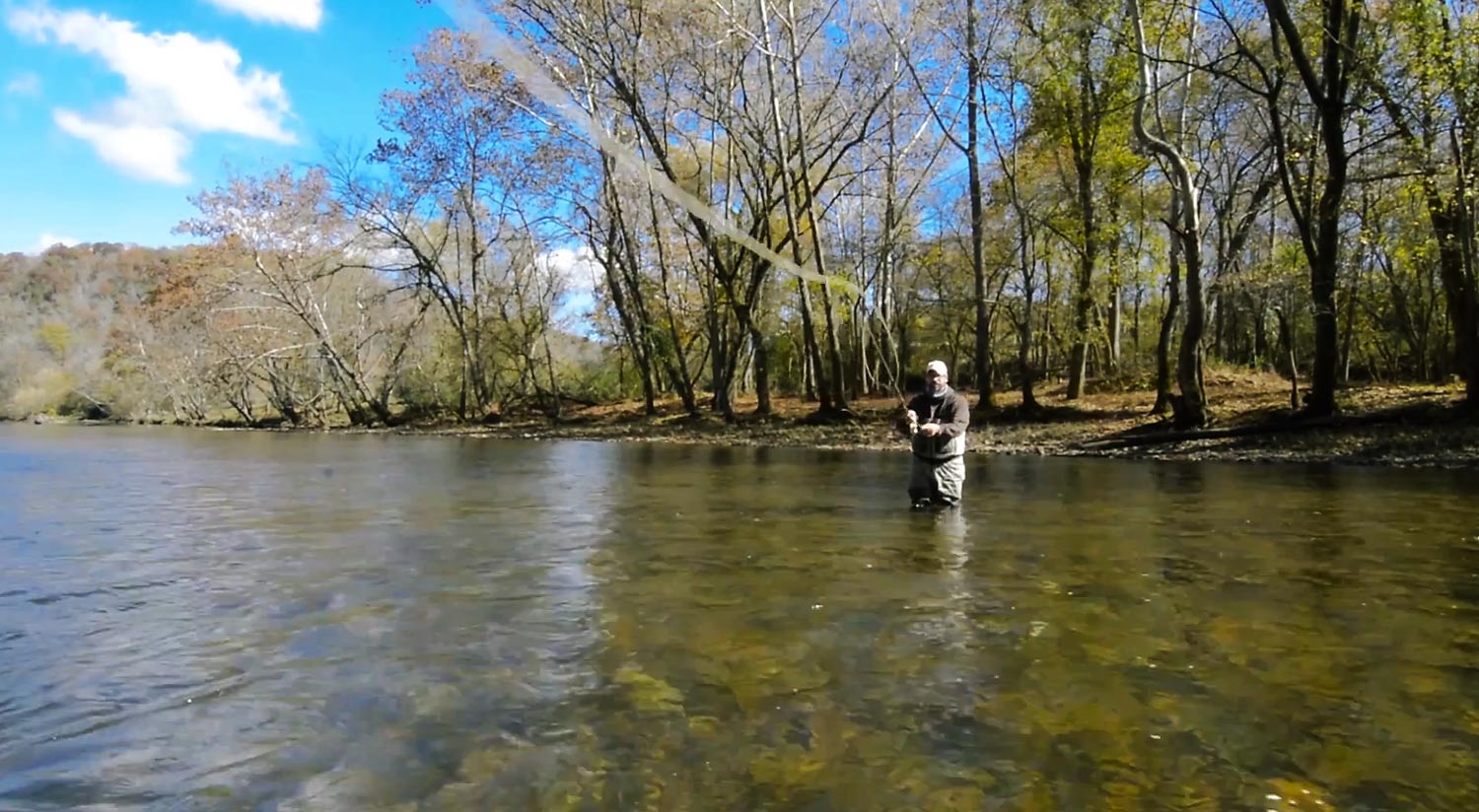By Louis Cahill
Access to a couple of good Spey casts can be a game changer for single-hand fly anglers.
All of the same physics that’s at work in Spey casting carries over to the single-hand rod. Although Spey casting can be technical and intimidating for the uninitiated, it’s really not rocket science and adding a couple of Spey techniques to your single-handed casting will put you on more fish.
Every single-hand caster is familiar with the roll cast. Most Spey casts build on the same principals that make up a roll cast. Spey casts use different methods to form the D loop and load the rod but are very similar and add a whole lot of extra power and distance.
One of the easiest and most useful casts for the single-hand angler is the Double Spey. It’s a powerful cast that works when you are casting from river right, if you’re a right-hand caster. The cast uses the current to put your line in the right position to start. With a few adaptations it can be made in still water, or from river left, but for now we’re just going to learn the basics.
There are 3 parts to this cast
It’s worth mentioning that some details will vary from casting with two handers
Setting the anchor
The tension of your leader and the tip of your fly line creates an anchor which allows you to load the rod with the weight of the fly line, during the next step. For everything to come off right, the anchor has to be in the right position. Start by facing your target. Then lift your rod, crossing your body, and drop your fly a rod length away and downstream at a 45 degree angle. Your rod should stop with the tip high and pointing upstream.
The Sweep
Start where your rod stopped when you set your anchor. Keeping the rod tip on the same plane, draw a full 270 degree circle, ending 180 degrees from your target. This sweep loads your rod and arializes your line. It functions the same way your backcast does in a normal cast. It’s one smooth motion and it’s super important that you do not stop your rod at the end of the sweep. If you do, the rod will unload and you’ll lose the power for your cast.
The Presentation Cast
This one is easy. It’s the same forward stroke you use in any fly cast. Just like a roll cast, your rod should travel in a straight line and accelerate smoothly to an abrupt stop. Just remember to move smoothly from the sweep into the presentation cast.
That’s a lot to take in but it’s easy when you see it in action. I’ll take you through it step by step in this video.
Louis Cahill Gink & Gasoline www.ginkandgasoline.com hookups@ginkandgasoline.com Sign Up For Our Weekly Newsletter!


thanks for the tips here. I have been wanting to learn some spey techniques for single hand rods and am hoping this is a jumping off point. Looking forward to more videos/tips on the subject.
Jay,
This is the 1st of I think 23 tips/tricks videos we’ve completed so far. If you have any requests that you would like us to record PLEASE let us know.
Jay: I often see stuff from other blogs here, so it probably won’t hurt to mention this. A site called ” Sexyloops” has a pile of more detailed information and videos on various single-hand spey casts. Worth checking out.
Funny but I could not get the hang of spey casting with a spey rod. Even with lessons. But then one day I decided to try it again with my singlehander. Walla !! Love it !! I’ve even hooked (and lost) some truelly big,picky eaters that were out in the middle of the current that you couldn’t cast to overhand because of a cliff right behind me. The spey cast did it though. I find myself spey casting ALOT now. I feel its almost quicker getting my fly back on the water than an overhead cast. Dry flies, smaller streamers, double nymph rigs….. No problem !!
This is interesting… But can u cast the whole line out with this technic using a balance tackle( same wt line as the wt of the rod ) please record and show us how even if the tackle is modified! Please let me know via email cause that would be a game changer for me!
Looking forward to see the video done!
Best Regards,
Philip
Am i crazy, to me the video shows” upstream” not “downstream” whilst setting the anchor. Does it matter if it is ‘upstream”?